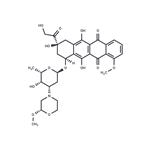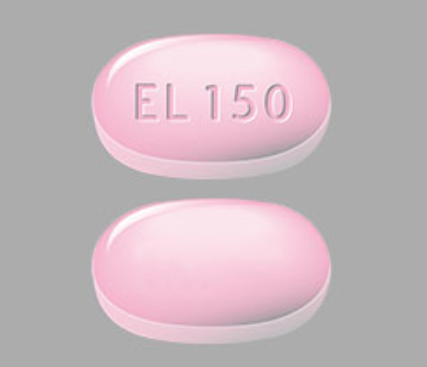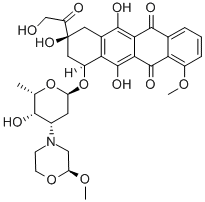Unlocking the Potential of Nemorubicin: Insights into Its Mechanism, Applications, and Storage
Dec 13,2024
Nemorubicin is a doxorubicin (DX) derivative bearing a methoxymorpholinyl group at position 3' of the sugar moiety which is now in clinical development for the treatment of hepatocellular carcinoma.

Mechanism of Action
Nemorubicin (NEMO) is a DNA-intercalator, different from classical anthracyclines, since its primary mode of action occurs through the inhibition of topoisomerase I. NEMO shows a broad spectrum of antitumor activity which is up to 150 times more potent than DX in in vivo models.
Applications
Nemorubicin, a doxorubicin derivative, is a DNA-intercalator, topoisomerase and RNA synthesis inhibitor that used for the treatment of solid tumours, specifically, the loco-regional treatment of primary liver tumours (hepatocellular carcinoma). The drug is active on tumors resistant to alkylating agents, topoisomerase II inhibitors and platinum derivatives.
Side effects
Cardiomyopathy, characterized by a progressive and late onset, is a major adverse effect caused by anthracyclines in animals and humans. One of the characteristics which makes Nemorubicin unique in comparison to other antracyclines, is the very low cardiotoxicity of this compound. The cardiotoxicity of Nemorubicin was carefully evaluated in comparison to DX in rodents after single and repeated intravenous administrations. The two compounds were administered to rats at equipotent doses exerting comparable efficacy as well as myelotoxicity. A long observation period after dosing was applied in all studies and cardiotoxicity was evaluated by histological examination of semi-thin sections of cardiac tissue.
Storage
4°C, protect from light.
References:
[1] DENNY W. Anti Cancer: DNA Topoisomerase Inhibitors[C]. 1900. DOI:10.1016/B978-0-12-409547-2.02669-X.
- Related articles
- Related Qustion
- Nemorubicin:Metabolism and Pharmacokinetics, Cytotoxic Activity And Toxicity Studies Feb 21, 2023
Nemorubicin is a member of the structural group of morpholinyl anthracyclines whose lead compounds were originally obtained by Takahashi et al.
Supplementation with pyridoxal 5'-phosphate monohydrate can synthesize neurotransmitters such as dopamine and serotonin, maintaining a healthy nervous system.....
Nov 4,2025Biochemical EngineeringIn 2018, the U.S. Food and Drug Administration (FDA) approved elagolix (Orilissa?) for treating pain associated with endometriosis—the first and only pill specifically approved for endometriosis pain relief.....
May 14,2024DrugsNemorubicin
108852-90-0You may like
Nemorubicin manufacturers
- Nemorubicin
-

- $51.00 / 1mg
- 2025-12-05
- CAS:108852-90-0
- Min. Order:
- Purity: 97.79%
- Supply Ability: 10g
- Nemorubicin
-

- $15.00 / 1KG
- 2021-07-13
- CAS:108852-90-0
- Min. Order: 1KG
- Purity: 99%+ HPLC
- Supply Ability: Monthly supply of 1 ton
- Nemorubicin
-

- $15.00 / 1KG
- 2021-07-09
- CAS:108852-90-0
- Min. Order: 1KG
- Purity: 99%+ HPLC
- Supply Ability: Monthly supply of 1 ton






